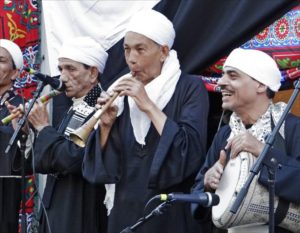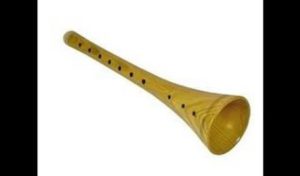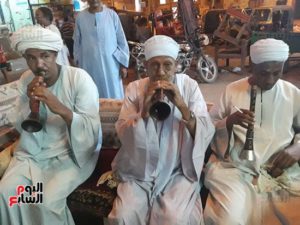Mezmar
Mezmar is a wind music instrument played by skilled players and accompanied the folk music groups on most festive social and religious occasions such as celebrating weddings, baby showers (Sebooe), the Birth of the Prophet “Mulid”, and nowadays in welcoming the guests and tourists in the touristic sights. Crafting Mezmaar is usually done by a professional craftsman as it requires a specific traditional knowledge transmitted orally through generations, most of the time within families or by the apprentice in the workshops. Mezmar has different types according to the location, still, the most common is Saeedy Mezmar and then comes Fallahy Mezmar which is common in Nile Delta region, Usually it is made of primitive material which is available in the natural environment, mainly bamboo with a certain number of holes (normally 5), the player presses on the holes while blowing, so leveling and blowing produce the required sound. Mezmar players are usually men. Mezmar is used on festive occasions and accompanies the music of folk ensembles made of metal, normally copper, the sound produced from Mezmar is close to the sounds of the Arab musical scale with the four voices, and due to the limited number of its holes (5 holes), Mezmar performs the melodies of the folk music which consists of only six notes. Mezmar was mentioned as a characteristic musical instrument in Egypt by orientalists in the 18th and 19th centuries, describing the audience gathering every night in the modest coffee shops in the villages listening to Rababa and Mezmar, wooden ones with the different types illustrated on the Egyptian temples proving the historic background of the instrument. Nowadays, Mezmar music is characteristic in wedding celebrations in all the Egyptian regions and governorates to people from different backgrounds and social classes. The joyful music of Mezmar qualified it to be part of all the happy occasions among the Egyptians, whether social (especially those related to the life cycle of the individual, such as birth and marriage) or religious, which they consider pure festive occasions in which they play music, sing, and dance.




